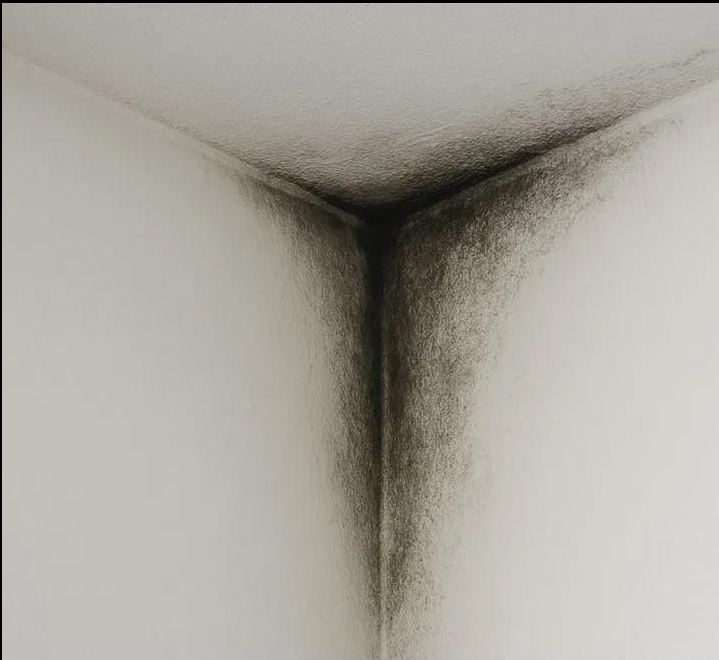If your walls are turning black in a corner, it’s a clear sign that moisture or mold is present, likely due to poor ventilation, water leakage, or condensation. This kind of discoloration is often caused by:
- Black mold (Stachybotrys) – a common indoor fungus that thrives in damp, dark, and humid areas.
- Condensation buildup – especially in colder corners where warm air meets cool surfaces.
- Leaks – from the roof, plumbing, or exterior walls that allow moisture to seep in.
Causes of moldy ceilings even though they are newly built

there are 3 main reasons that can lead to moldy ceilings even though they are newly built:
First, the homeowner uses interior paint without an alkaline-resistant primer (a white paint used as a base layer before applying the next layer of color paint). The alkaline-resistant primer has the main effect of preventing mold and moss on the wall.
Second, the ceiling surface is not dry yet, but the worker still paints. This can affect the paint layer on the wall surface, reducing the ability to resist mold or moss.
Third, there is another possibility of using poor quality interior paint, which not only fails to protect the wall surface, but also creates conditions for mold to grow and develop.
What to do:
- Inspect the source: Check for leaks or condensation.
- Improve ventilation: Use dehumidifiers, open windows, or install exhaust fans.
- Clean the mold: Use vinegar, baking soda, or a mold-specific cleaner (wear gloves and a mask).
- Fix insulation: Poorly insulated walls can trap cold air, encouraging moisture buildup.
- Call a pro: If it’s extensive or keeps coming back, it might be time for professional remediation.